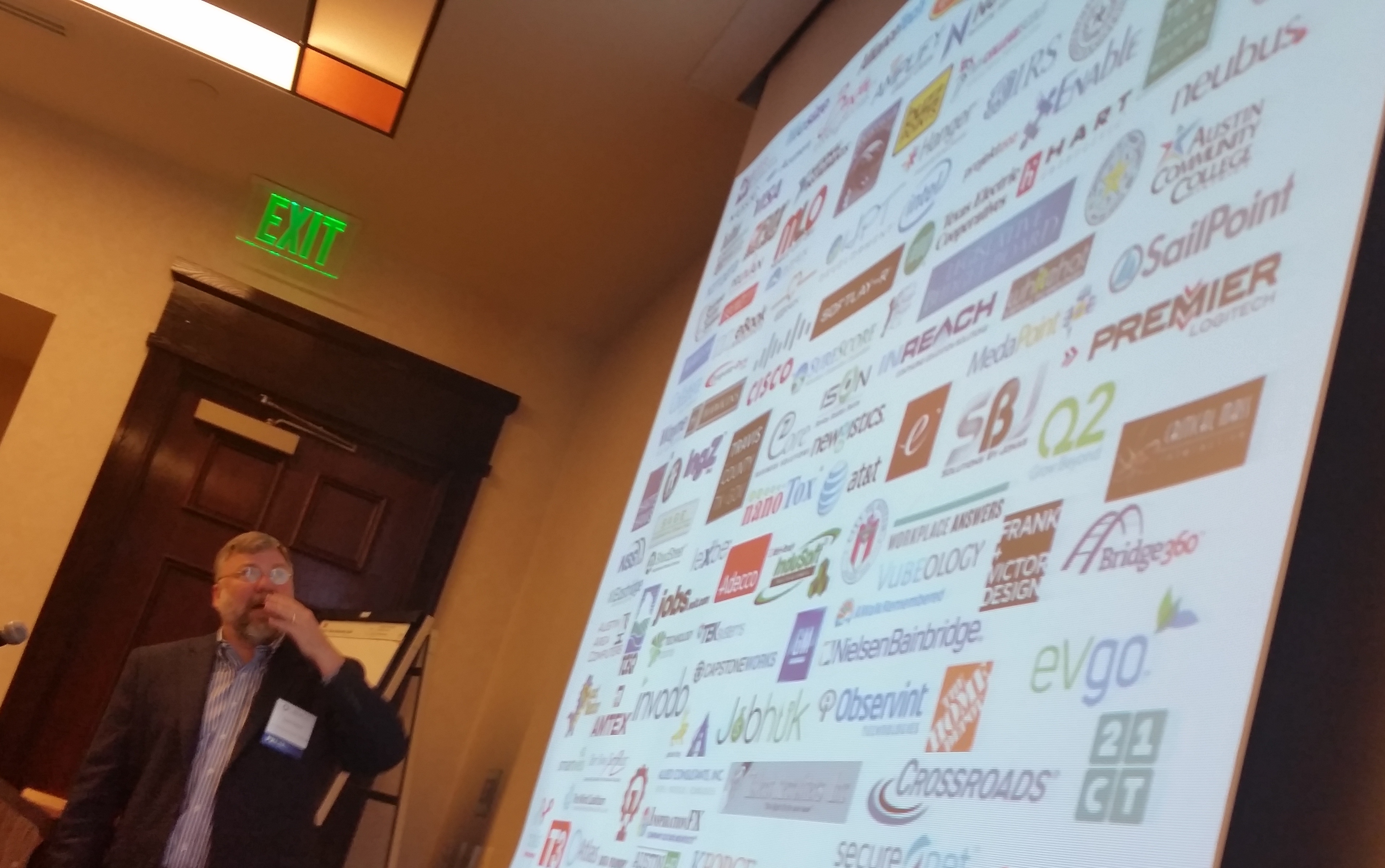Implementing a CBE Program: Lessons Learned from Community Colleges
Published by: WCET | 6/11/2015
Tags: Accreditation, Collaboration/Community, Competency-based Education, Completion, Open Educational Resources, Outcomes, Student Success
Published by: WCET | 6/11/2015
Tags: Accreditation, Collaboration/Community, Competency-based Education, Completion, Open Educational Resources, Outcomes, Student Success
“We are introducing a disruptive model into the traditional college campus. Nothing will be the same once you take the time orientation off the table.” Tom Nielsen (Bellevue College)
Tom shared that wisdom at last week’s CBE4CC event, which brought together hundreds of community college faculty and administrators from throughout the U.S. They shared their progress and hopes for implementing competency-based education (CBE) programs. The Bill & Melinda Gates Foundation, Western Governors University, and several community colleges hosted the session aimed at sharing lessons learned.
There has been tremendous growth and innovation in CBE. This is especially true in programs that map well to specific occupations. While it is hard to summarize all that was shared at this event, below are some of my key takeaways.
Completion Rates for CBE Programs are Quite High
Presenters commonly reported completion rates of 75 to 90% for their CBE programs. Some of the colleges’ rates could have been higher. Some students left early because they were offered jobs based on what they had learned so far. Upon graduation, employment placements often approached 100%.
Effective Recruiting, Advising, and On-boarding Students is Essential
Recruiters and marketing efforts need to acknowledge and celebrate the unique nature of CBE programs. Even though community colleges are typically open enrollment, the CBE programs determine whether an applicant is a good fit for the program. Several colleges use Smarter Measure to evaluate student readiness. To that tool, some colleges add assessments (e.g., math and writing) to help assure student “fit.” Orientations are commonly used to increase student success. CBE courses differ from those that students’ previously experienced and they need to be alerted to those differences.
Coaches / Mentors / Advisers (Whatever You Call Them) Are Key to Success
Colleges use non-faculty personnel who are assigned a students to assist. The Coach (colleges vary in what they call them) identifies possible obstacles, monitors student progress, contacts the student (often weekly), coordinates with the student’s faculty, and helps the student stay on track to meet his or her goals. Ed Sargent of Edmonds Community College said that he would never run an online program without a Coach, whether it is CBE or not. According to Ed: “They are why we have a successful program. Student mentors remove excuses.”
Communicating about “Pace” is Important
One college stripped all reference to “self-paced” from their materials because students thought they could take as long as they wanted. That college switch to “accelerated” to change the student mindset from leisurely to active pursuit of success. “Pacing charts” set benchmarks that students should meet if they want to finish the course more quickly. The same course may have several “pacing charts” (16, 12, 8, 4 weeks) to accommodate the ambitions of different students. The Coaches work with the students on a setting a pace that meets current needs. If a pace is too fast for a student, she or he will fail.
Unbundling Faculty Roles is an Unnatural (but Necessary) Act
CBE allows colleges to “unbundle” all the roles traditionally assigned to faculty, such as: course development, assessment development, facilitation, grading, student performance monitoring. If you were to create a spectrum of that ranged from faculty fulfilling all their traditional roles to a completely unbundled model (such as WGU’s), the colleges at the meeting would land all across that spectrum. If you do unbundle roles, it was recommended that faculty be included early and often in the decision-making process. There also was a mix of engaging senior faculty, adjunct faculty, or hiring completely new faculty for the CBE program. In any case, set clear roles, expectations, and boundaries for everyone.
Decide on Buy, Share, or Build Content Models
While Department of Labor’s TAACCCT grants specifically incentivized the creation of open educational resources, the reuse of such materials appeared to be minimal. Most seemed to have built their own content or purchased content from publishers. As the CBE matures, the opportunities to share or buy content are growing.
Working within Your Systems
Most colleges can’t purchase an SIS or LMS that is dedicated to CBE, so you often have to work with what you have. Annie Myers of Broward College advised us to avoid manual workarounds. If you are thinking about sustainability, build CBE processes into your systems from the start. Sam Greer (Austin Community College) lamented about his system’s ability to handle transcripts only to have a colleague from another college point him to the “athletics module.” In researching her suggestion, he found that there are often alternatives already built into many systems.
Expect Pushback
CBE is a different way of doing business for faculty, administrators, and students. Any time there is change, expect pushback. Find those from other CBE colleges who are doing the “impossible” and learn from them.

Collaboration Helps
There were great examples of how colleges were able to overcome some obstacles by working in partnership with others. The Washington State Board of Community and Technical Colleges leveraged existing support systems and shared development costs. Austin (TX), Broward (FL), and Sinclair (OH) Community Colleges are an unlikely grouping, but they have benefited by learning from the advances made by the other two colleges.
Sustainability is Still An Issue
Some creative means of obtaining corporate involvement in the program were shared, but that was mostly at the program advisory and recruiting functions. Sam Greer (Austin Community College) advised us not to count on corporations paying for any portion of on-going development or operational costs. It was my observation that there several CBE efforts were bolted onto existing structures at the campuses. In my opinion, if you are not rethinking your structures (unbundling faculty, replacing some functions with CBE functions) then your costs will only increase and sustainability will be more difficult. On the positive side, higher completion rates means that money can be saved on retention and recruitment of students.
NOTE: On June 9 (after the CBE4CC event) the U.S. Department of Education released its long-awaited take on how it will regulate CBE programs. More on this to come.
Thank you to Nancy Thibeault (Sinclair Community College) and Sally Johnstone (WGU) for asking me to help out at the event. I believe that CBE4CC will share additional information on outcomes from the meeting and any future events on its website.
Great job in sharing by all involved. Congratulations to the Foundation, WGU, and the community colleges who lead this effort.
Good luck in implementing CBE!
Russ
Russell Poulin
Director, Policy & Analysis
WCET – WICHE Cooperative for Educational Technologies
rpoulin@wiche.edu
If you like our work, join WCET!
Credit for graduate photo: Morgue File
1 reply on “Implementing a CBE Program: Lessons Learned from Community Colleges”
I forgot to mention that WGU announced that it is creating a new Journal of Competency-Based Education. This is a welcomed addition.
http://www.wgu.edu/CBEjournal
Press Release: http://www.prnewswire.com/news-releases/wgu-to-launch-journal-of-competency-based-education-300094982.html